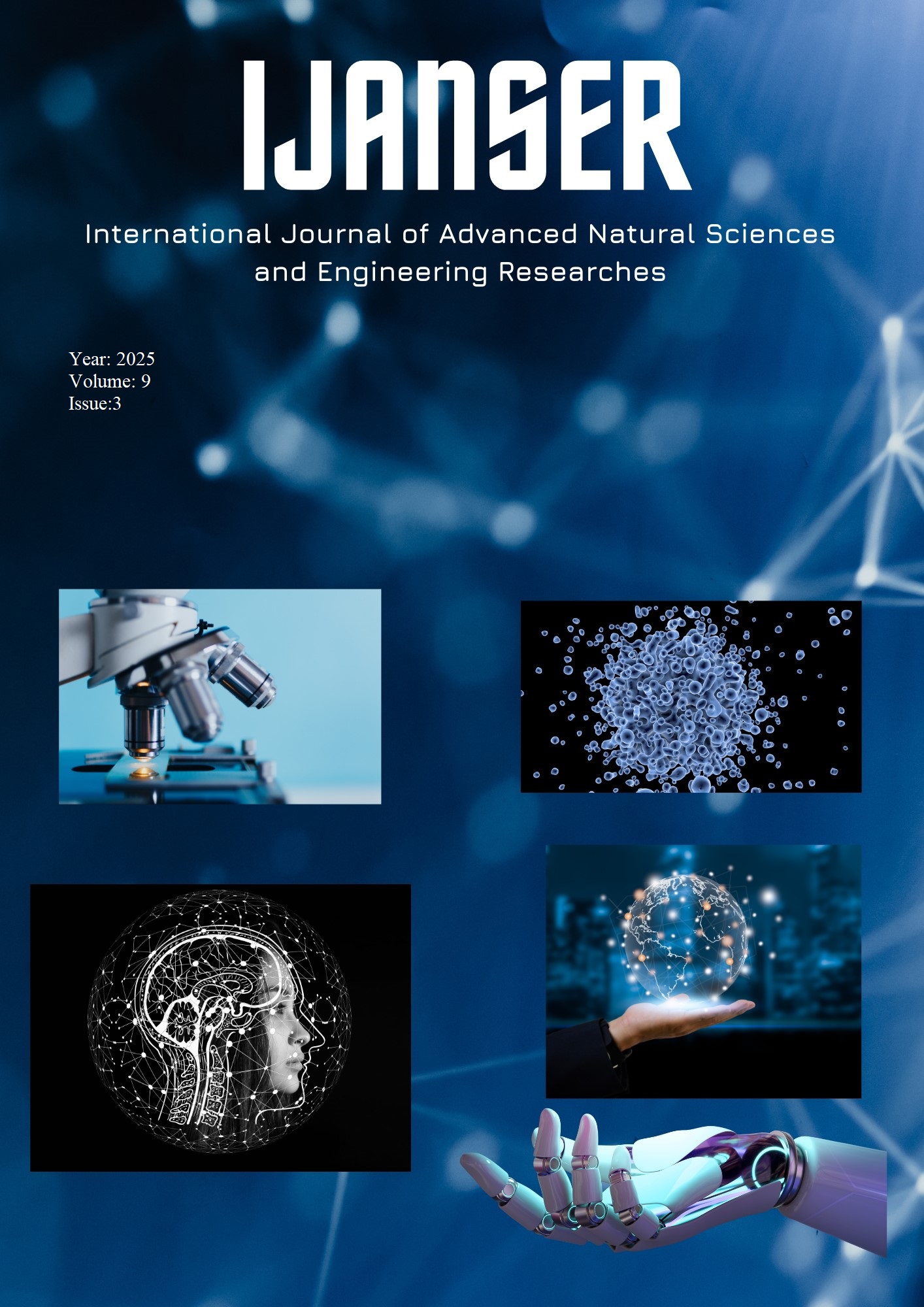Deep Learning-Based Segmentation of High-Grade Glioma Tumors: A Comparative Analysis of MRI-Based Models
DOI:
https://doi.org/10.5281/zenodo.15038514Keywords:
Attention UNet, Brain Tumor Segmentation, Deep Learning, Medical Imaging, MRIAbstract
Brain tumors, particularly high-grade malignant gliomas, pose a significant public health
challenge due to their high lethality and impact on patients' quality of life. Recent advancements in deep
learning-based medical imaging techniques have revolutionized brain tumor detection and segmentation,
enabling more precise and automated diagnostic processes. This study evaluates the performance of
multiple deep learning architectures, including UNet, Attention UNet, ESNet, LEDNet, LinkNet, SQNet,
and SegNet, for brain tumor segmentation using MRI scans from the Gazi Brains 2020 dataset. The
models were assessed based on various performance metrics, including Intersection over Union (IoU),
sensitivity, accuracy, and specificity. The results indicate that Attention UNet achieved the highest
segmentation accuracy, demonstrating superior performance in delineating tumor regions. However, the
trade-off between segmentation accuracy and computational efficiency remains a critical consideration.
The findings underscore the potential of deep learning-based segmentation techniques in improving the
accuracy and efficiency of brain tumor diagnosis, paving the way for more effective clinical decision
making. Future research could explore hybrid architectures and multi-modal MRI integration to further
enhance segmentation precision while optimizing computational resources.
Downloads
References
I. Ilic and M. Ilic, “International patterns and trends in the brain cancer incidence and mortality: An observational study based on the global burden of disease,” Heliyon, vol. 9, no. 7, p. e18222, Jul. 2023, doi: 10.1016/J.HELIYON.2023.E18222.
W. A. Mustafa, H. Alquran, and R. Kaifi, “A Review of Recent Advances in Brain Tumor Diagnosis Based on AI-Based Classification,” Diagnostics, vol. 13, no. 18, p. 3007, Sep. 2023, doi: 10.3390/DIAGNOSTICS13183007.
E. Brain Tumor, V. Kumar, D. Kumar, A. M. Mostafa, M. Zakariah, and E. Abdullah Aldakheel, “Brain Tumor Segmentation Using Deep Learning on MRI Images,” Diagnostics, vol. 13, no. 9, p. 1562, May 2023, doi: 10.3390/DIAGNOSTICS13091562.
A. Miranda-Filho, M. Piñeros, I. Soerjomataram, I. Deltour, and F. Bray, “Cancers of the brain and CNS: global patterns and trends in incidence,” Neuro. Oncol., vol. 19, no. 2, p. 270, 2016, doi: 10.1093/NEUONC/NOW166.
J. Zhang, Z. Jiang, J. Dong, Y. Hou, and B. Liu, “Attention Gate ResU-Net for Automatic MRI Brain Tumor Segmentation,” IEEE Access, vol. 8, pp. 58533–58545, 2020, doi: 10.1109/ACCESS.2020.2983075.
J. R. Chang et al., “Stain Mix-Up: Unsupervised Domain Generalization for Histopathology Images,” Lect. Notes Comput. Sci. (including Subser. Lect. Notes Artif. Intell. Lect. Notes Bioinformatics), vol. 12903 LNCS, pp. 117–126, 2021, doi: 10.1007/978-3-030-87199-4_11.
A. Amiri Tehrani Zade, M. J. Aziz, S. Masoudnia, A. Mirbagheri, and A. Ahmadian, “An improved capsule network for glioma segmentation on MRI images: A curriculum learning approach,” Comput. Biol. Med., vol. 148, p. 105917, Sep. 2022, doi: 10.1016/J.COMPBIOMED.2022.105917.
L. Zhang, Y. Li, Y. Liang, C. Xu, T. Liu, and J. Sun, “Dilated multi-scale residual attention (DMRA) U-Net: three-dimensional (3D) dilated multi-scale residual attention U-Net for brain tumor segmentation,” Quant. Imaging Med. Surg., vol. 14, no. 10, pp. 7249–7264, Oct. 2024, doi: 10.21037/QIMS-24-779/COIF.
A. Ferreira et al., “How we won BraTS 2023 Adult Glioma challenge? Just faking it! Enhanced Synthetic Data Augmentation and Model Ensemble for brain tumour segmentation,” Feb. 2024, Accessed: Mar. 04, 2025. [Online]. Available: https://arxiv.org/abs/2402.17317v2
“GAZI_BRAINS_2020 - syn25926092 - Files.” Accessed: Mar. 04, 2025. [Online]. Available: https://www.synapse.org/Synapse:syn25926092
V. Badrinarayanan, A. Kendall, and R. Cipolla, “SegNet: A Deep Convolutional Encoder-Decoder Architecture for Image Segmentation,” IEEE Trans. Pattern Anal. Mach. Intell., vol. 39, no. 12, pp. 2481–2495, Dec. 2017, doi: 10.1109/TPAMI.2016.2644615.
R. Niu et al., “SQNet: Simple and Fast Model for Ocean Front Identification,” Remote Sens. 2023, Vol. 15, Page 2339, vol. 15, no. 9, p. 2339, Apr. 2023, doi: 10.3390/RS15092339.
A. Chaurasia and E. Culurciello, “LinkNet: Exploiting encoder representations for efficient semantic segmentation,” 2017 IEEE Vis. Commun. Image Process. VCIP 2017, vol. 2018-January, pp. 1–4, Jul. 2017, doi: 10.1109/VCIP.2017.8305148.
Y. Wang et al., “Lednet: A Lightweight Encoder-Decoder Network for Real-Time Semantic Segmentation,” Proc. - Int. Conf. Image Process. ICIP, vol. 2019-September, pp. 1860–1864, Sep. 2019, doi: 10.1109/ICIP.2019.8803154.
Y. Wang, Q. Zhou, J. Xiong, X. Wu, and X. Jin, “ESNet: An Efficient Symmetric Network for Real-Time Semantic Segmentation,” Lect. Notes Comput. Sci. (including Subser. Lect. Notes Artif. Intell. Lect. Notes Bioinformatics), vol. 11858 LNCS, pp. 41–52, 2019, doi: 10.1007/978-3-030-31723-2_4.
A. L. Qurri, A. ; Almekkawy, A. Al Qurri, and M. Almekkawy, “Improved UNet with Attention for Medical Image Segmentation,” Sensors 2023, Vol. 23, Page 8589, vol. 23, no. 20, p. 8589, Oct. 2023, doi: 10.3390/S23208589.
A. F. Bayram, C. Gurkan, A. Budak, and H. Karataş, “Convolutional Neural Networks for MRI-Based Brain Tumor Segmentation: A Comparative Analysis of State-of-the-Art Segmentation Networks,” Turkish J. Forecast., vol. 06, no. 2, pp. 61–66, Dec. 2022, doi: 10.34110/FORECASTING.1190289.





